Religion in the Twelve Colonies (TOS)
More languages
More actions
- This article summarizes information on the Colonial faith of the Original Series. For information the faith of the Twelve Colonies of the Re-imagined Series, see Religion in the Twelve Colonies (RDM).
| Part of the series on | |
The religion of the Twelve Colonies of Man[1] appears to be a combination of a monotheistic religion with prophetic rulers, but is described in sparse detail.
The Lords of Kobol
editLong before the Thousand-Yahren War, humanity lived on Kobol. Also with them were the Lords of Kobol.[2]
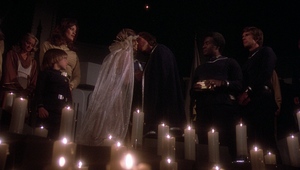
Adama calls on God to bless the sealing, or marriage, of Apollo and Serina, where Adama blesses the sealing:[3][4]
"Under the eyes of God, bound by the symbol of the faiths of the Lord of Kobol, I declare you sealed."
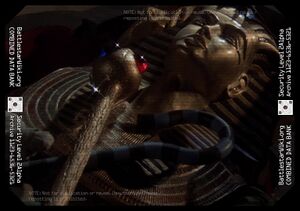
The Lords of Kobol may have been humans, mortal men who were honored as prophets, as illustrated by the tomb of the Ninth Lord of Kobol,[5] resting in the largest city, Eden.
Contradicting both concepts of human prophets in a monotheistic religion in later episodes is dialogue from Adama, who implies that the Lords of Kobol held special powers when he questions if Count Iblis, who has exhibited several mystical/superhuman powers, is related to the Lords of Kobol (TOS: "War of the Gods, Part I").[6]
The Book of the Word
edit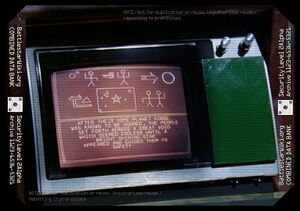
The Book of the Word is apparently the central tome of scripture, which tells of the exodus of humanity from Kobol after it is left in ruins from a series of ecological disasters.[7]
The Colonials continue the architectural concepts from Kobol, eons later. On the colony of Caprica, some buildings of the city are in the shape of pyramids, such as the ones seen behind Serina as she reports on the anticipated peace conference events.
Some colonists from Gemoni are members of the Otori Sect.
The Seal of the Lords of Kobol
edit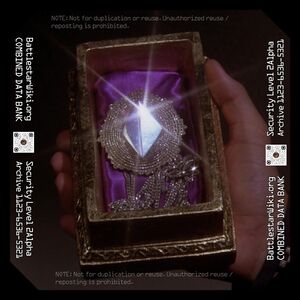
In the past, each member of the Quorum of Twelve is given a Seal of the Lords as a symbol of their Kobollian authority. While few of these medallions existed by the time of the Battle of Cimtar, these items also serve as keys to enter the Tomb of the Ninth Lord of Kobol and disabling its booby traps.
Adama appears to fill the role of a priest in certain circumstances and religious rituals ("Saga of a Star World" - deleted scene, "Lost Planet of the Gods, Part II"), though whether his position entails actual membership in a priesthood or not is unclear.
The Beings of Light
edit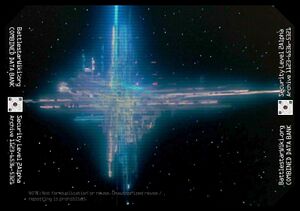
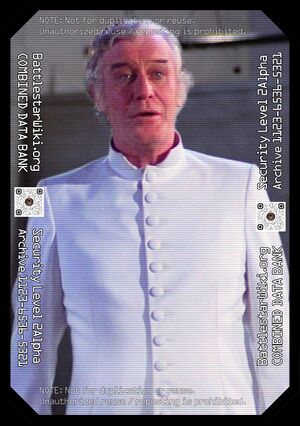
The later introduction of the Beings of Light adds an additional mysticism to the Colonial faith, but the series never defines their place, if any, in the Colonial faith. The Beings of Light themselves note that Iblis is a fallen member of their kind.
References
edit- ↑ Please note the difference in spelling. The Twelve Colonies of Man is the Original Series counterpart of the Re-imagined Series version, the Twelve Colonies of Kobol.
- ↑ While the Re-imagined Series parallels its version of the Lords of Kobol to that of the Olympian pantheon, the Original Series suggested that its faith (or, at least its appearances) paralleled that of Egyptian mythology. The pyramids, and the use of an Egyptian Pharaoh's mummy headdress for the Ninth Lord of Kobol emphasizes this parallelism. However, the series heavy use of Mormon theology (see Battlestar Galactica Frequently Asked Questions, E21. Are there parallels between Battlestar Galactica and Mormonism?and The Millennial Star, Battlestar Galactica and Mormonism) and occasional use of references to Greek and Roman mythology (such as in names like "Apollo" and "Athena") also indicates that the Colonial religion is not merely a copy of Egyptian religion, but borrows from several sources.
- ↑ Episode dialogue, "Lost Planet of the Gods, Part I."
- ↑ This singular use of "Lord" and not "Lords" may be an editing mistake or, if correct, a continuity error in the Original Series.
- ↑ Given that there was a "Ninth" Lord of Kobol, it can be suggested that there were other Lords of Kobol, but no further information on the Colonial religion is given in the single season of the Original Series, or its spinoff, Galactica 1980.
- ↑ This reference may be a reference to the Mormon belief that the most devout worshipers of their faith would go on to become gods of their own universes under the concept of the third of three heavens known as the Celestial Kingdom in LDS theology. This may have been an attempt to imply that the Lords of Kobol themselves, while recognizing a central God, became gods themselves in the universe of Battlestar Galactica or it may indicate they held a status akin to Catholic saints or Bodhisattvas.
- ↑ This concept may be reflective of the then-waning ecology movement that began in the late 1960s in America.
